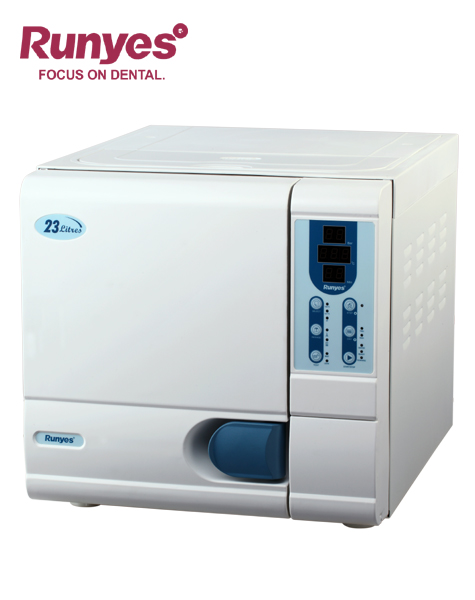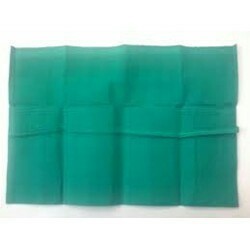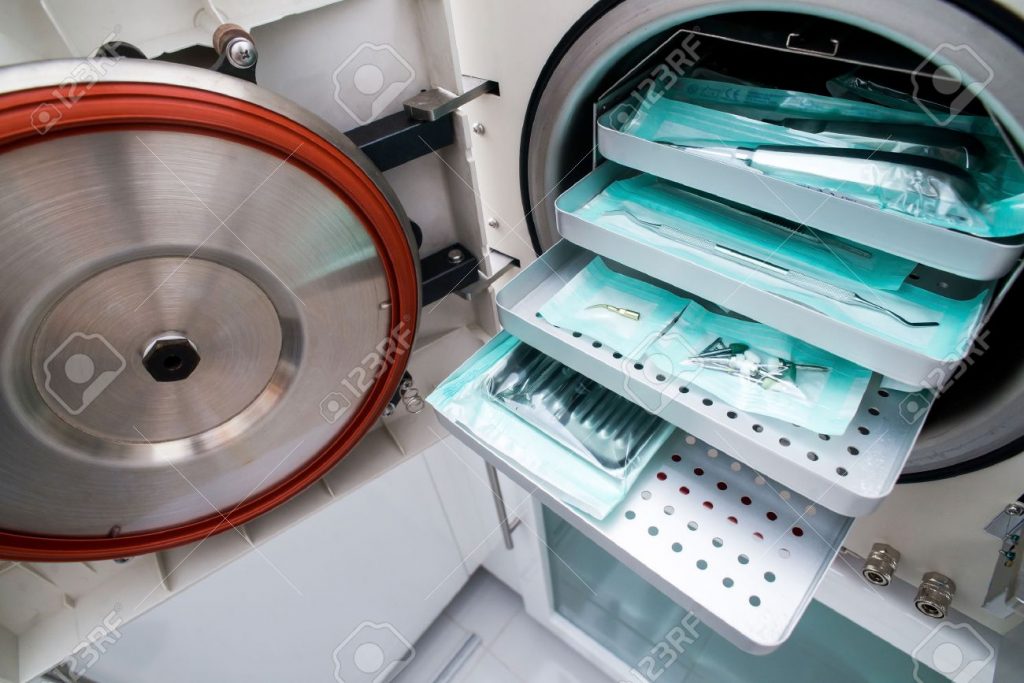COVID-19 Measures
Advanced Equipment
Air Purifiers, a necessity at Dental Clinics
While visiting a dentist can be a great idea for keeping up with your dental health, but what if it increases the risk of various diseases due to poor indoor air pollution?
The usage of chemical compounds during dental work significantly increases the risk of potentially harmful airborne contaminants that can pose serious threat to the dentists, staffs and the patients.
The Center for Disease Control (CDC) states that indoor air is usually 5 times more polluted than outdoor air.
Do you ever notice the mist generated in the air when the dentist uses high speed drills, ultrasonic scaling equipment or three way syringes?
The dental office is a high traffic space, accessible to the public with multiple daily interactions.
This leads to spreading bacteria, viruses and harmful fungal infections in the air, on the furniture, on dental equipment, and flooring which can produce harmful volatile organic compounds.
The ultrasonic instruments used in the clinics further increase the risk as constant cleaning and disinfecting contact surfaces creates bio-aerosols which decreases the quality of air.
Unfortunately, most of the dental offices have not yet taken the necessary precautionary measures of purifying air due to lack of awareness.
The patient’s oral cavity contains 350 different types of bacteria which is exposed during dental treatments while using high and low speed of drilling into teeth, bones and tissues.
Various microbes from the saliva, blood, plaque is dispersed in the air which when inhaled can become a potential source of infection for everyone in the clinic.
The pathogens suspended in the air can travel, posing threats to vulnerable patients like children, pregnant woman and older people.
Mercury vapors is another source of indoor air contamination. These chemicals are dispersed during the removal of amalgam fillings.
Numerous studies show high levels of inorganic mercury found in the blood and urine of various dentists and staffs. This can cause issues to kidneys, liver, intestines, heart, brain, and other organs causing serious chronic health issues.
Harsh chemical disinfectants used by hospitals and clinics for surface cleaning also increases the level of Volatile Inorganic Compounds (VOCs). No wonder the hospitals and clinics smell a definite way and we often “nose-blind” to the smells.
Poor air quality can have significant effect on human health. Symptoms mainly include headaches, dryness, irritation of the eyes, nose and throat, coughing, sneezing, shortness of breath, dizziness and nausea.
It also tends to affect cognitive functions which may lower worker productivity and increase the chances of absenteeism due to respiratory illnesses.
Dental professionals often sterilize instruments, disinfect floors, furniture as per the universal protocol, but indoor air quality is often ignored.
So, What’s the solution?
Here’s where the Air Purification system come into place.
A study by the SRM Journal of Research in Dental Sciences state that the combination of High Efficiency Particulate Arresting (HEPA) and Carbon Air Purifiers are very effective in reducing bio-aerosols thereby preventing airborne infection.
While a carbon filter is ideal for chemicals and odors in the air, HEPA is ideal for destroying air pollutants causing infection.
It traps the Aspergillus fungus spores inside the filter, thus, beneficial to asthmatic patients and removes tuberculosis bacilli from the air (tuberculosis containing droplet nuclei are approximately 1-5 microns in diameter).
Coway Air Purifiers offer an ideal solution to these issues.
It contains the unique filtration system – Pre-filter, Urethane carbon filter and Green Anti-flu HEPA filter that kills the protein on the surface of the virus thereby making it difficult for viruses to survive or breed.
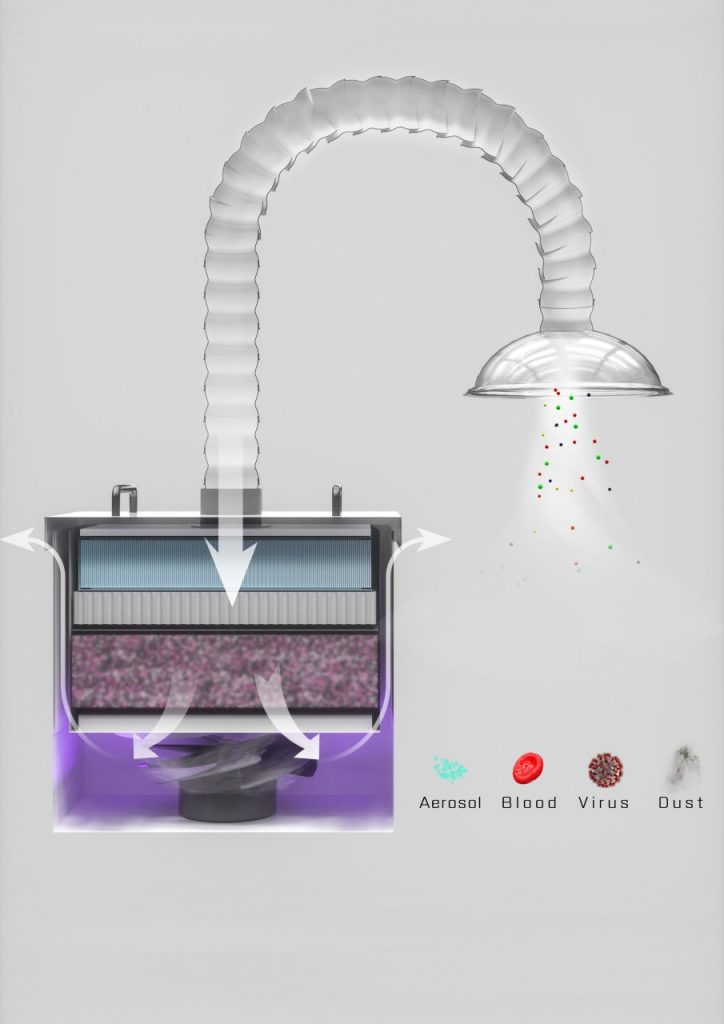
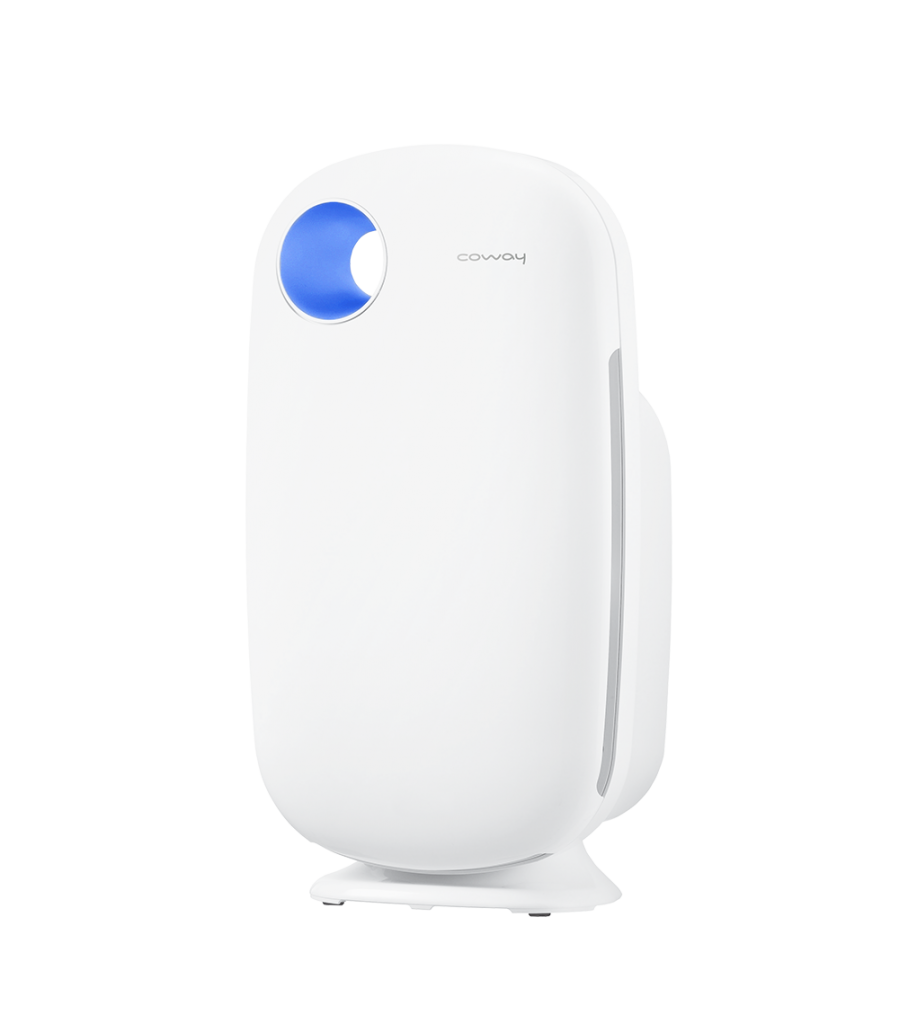
Extraoral Dental Suction System
Autoclave
Autoclave is the machine that harnesses the power of high temperature and high pressure steam in order to sterilize germs on dental equipment, such as forceps, intended for reuse, thus ensuring its safety for the next patient.
